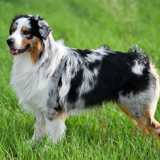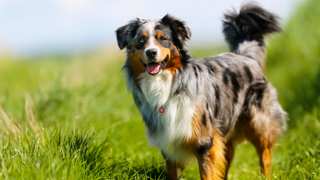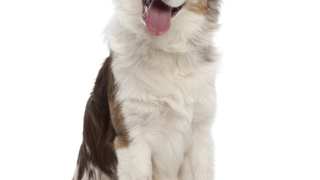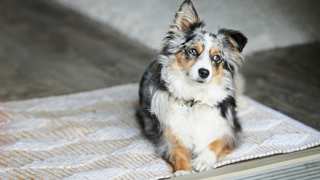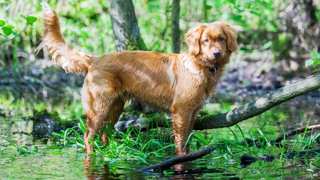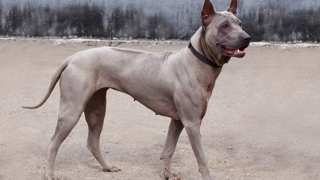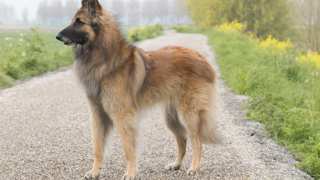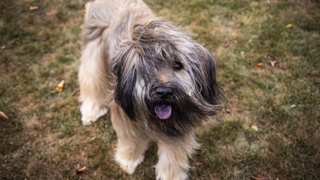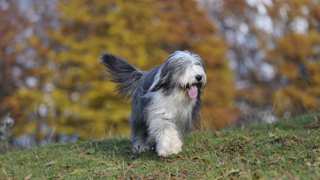These dogs are active, athletic, and task-oriented, so Australian Shepherd exercise needs are fairly extensive. With their long history as intelligent herding dogs, Aussies need a variety of activities that not only allow them to stretch their legs (walking, fetch, etc.), but will stimulate them mentally as well as physically (obstacle course or canine sports). They make good jogging and bicycling companions as well.
And specifically how much exercise does an Australian Shepherd need? An adult Aussie, depending on its age and overall activity level, will do well with 60 minutes of proper exercise per day--which you can accomplish with a couple of walks, jogs, or bike rides and a good period of play. You can start exercising your Aussie puppy at three months old by taking it on short (5- to 7-minute) walks, then you can increase the walks' length and frequency as the puppy grows.
A few things to keep in mind when exercising an Australian Shepherd: first, puppies younger than nine months old shouldn't participate in activities that include a lot of jumping, running on hard surfaces, or navigating of stairs, as doing so can injure their still-developing joints and bones. And regardless of age, the use of a leash is recommended when you and your Aussie are in public. These dogs have both high prey drives and strong herding instincts; they'll chase interesting-looking critters--birds, squirrels, cats--if given the chance, and they'll instinctively try to control moving objects--people, animals, even bicyclists and cars--if allowed. A leash will help you control your Aussie in these situations. Even when exercising in your own yard, the area will need to be securely fenced to keep the dog from running off. Otherwise, Australian Shepherds are healthy and hardy, and can exercise in a variety of environments and weather conditions.
Precautions aside, it's important to give your Aussie some exercise every single day. As natural livestock herders, these dogs have a very strong work ethic and need a job to do--and a bored or restless Australian Shepherd will become frustrated, disobedient, and destructive. So consistent exercise will be great for both the dog's and your own peace of mind! A few exercise ideas:
- Walking/Jogging/Bicycling: Two 20-minute walks (or 15-minute jogs or bike rides) per day is a good target
- Fetch/Frisbee: Aussies will chase a ball, stick, or Frisbee for hours
- Tug-of-War: Great indoor, rainy-day activity; use a rope or old towel
- Dog Park: If properly socialized, Aussies enjoy the company of other dogs
- Canine Sports: Australian Shepherds can excel in obedience and agility trials, flyball, and other events
- Hiking: Great bonding activity; bonus if you can find a remote area where the dog can be off-leash
If your Aussie spends a lot of time indoors, it's a good idea to give the dog access to one or more balls or toys that will allow it to burn excess energy. It's also recommended that you establish a regular exercise schedule for the dog, such as walks, jogs, or bike rides after breakfast and dinner and a play period in the afternoon.
